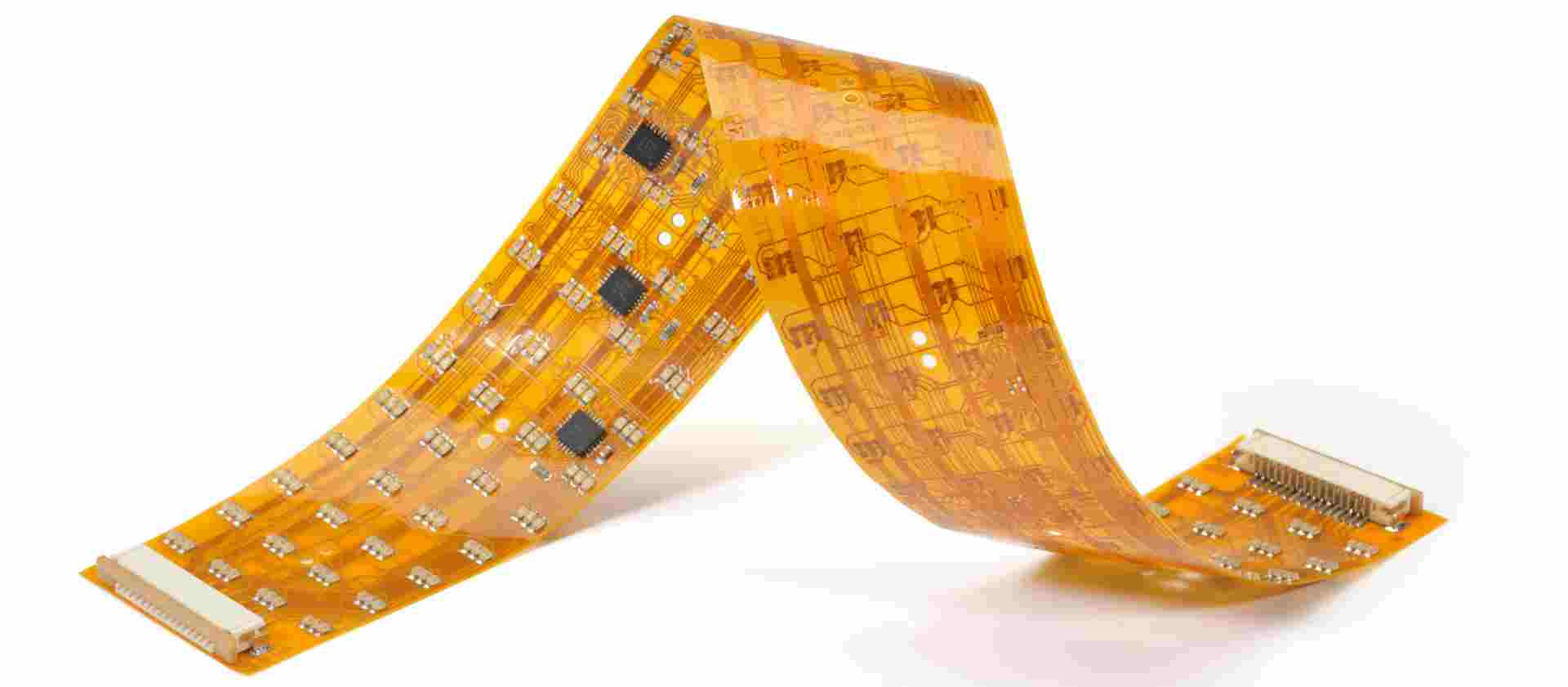
ALL ABOUT FLEX PCB
-
 Read more: The Advantages and Applications of Transparent Flex PCBs
Read more: The Advantages and Applications of Transparent Flex PCBsIntroduction Printed circuit boards (PCBs) are essential components in almost all modern electronic devices. They provide the physical foundation to mount and connect electronic components using conductive tracks etched from copper sheets laminated onto a non-conductive substrate. While the most common type of PCB uses a rigid fiberglass substrate like […]
-
Rigid Flexible Printed Circuits: A Guide
Posted by
–
 Read more: Rigid Flexible Printed Circuits: A Guide
Read more: Rigid Flexible Printed Circuits: A GuideIntroduction to Rigid FPCs A flexible printed circuit (FPC) is a thin, lightweight circuit made from flexible insulating material with conductive traces etched or printed on one or both sides. FPCs allow connections between electronic components and devices even in environments where flexing or bending is required. Rigid-flexible printed circuits […]
-
 Read more: Long Flex PCBs: A Guide to Design and Manufacturing
Read more: Long Flex PCBs: A Guide to Design and ManufacturingIntroduction A long flex PCB, also known as a flexible printed circuit board, is a thin and flexible circuit board that allows connections between two or more rigid circuit boards. Long flex PCBs provide various advantages over traditional rigid PCBs, especially in applications that require dynamic flexing, tight space constraints, […]
-
Rigid Flex PCB Prototype Design Considerations
Posted by
–
 Read more: Rigid Flex PCB Prototype Design Considerations
Read more: Rigid Flex PCB Prototype Design ConsiderationsRigid flex PCBs (printed circuit boards) combine rigid FR-4 boards with flexible circuits bonded together. They provide solutions for complex electronics with space, weight, or wiring constraints. When designing a rigid flex PCB prototype, engineers must consider factors like layer stackup, materials, spacing, and testing. Designing the Layer Stackup The […]
-
 Read more: Flexible and Rigid-Flexible Printed Circuit Boards
Read more: Flexible and Rigid-Flexible Printed Circuit BoardsIntroduction to Flex Circuits and Rigid-Flex Printed circuit boards (PCBs) provide the foundation for almost all modern electronics. Traditional PCBs use rigid laminated sheets made of materials like FR-4 glass epoxy. However, many applications require circuits that can bend and flex. Flexible printed circuits (FPCs) and rigid-flex PCBs provide solutions […]
-
 Read more: Design and Fabrication Techniques for Flexible Printed Circuit Boards
Read more: Design and Fabrication Techniques for Flexible Printed Circuit BoardsIntroduction Flexible printed circuit boards (flex boards or flex circuits) have become an essential component in modern electronics due to their ability to bend and flex. Flex circuits allow circuitry to move freely and dynamically within a product. They are most commonly found in smaller consumer devices like cell phones, […]
-
 Read more: Getting an Accurate Flex PCB Online Quote: A Step-by-Step Guide
Read more: Getting an Accurate Flex PCB Online Quote: A Step-by-Step GuideIntroduction Flex PCBs (flexible printed circuit boards) are gaining popularity for their ability to bend and flex to fit into tight or moving spaces. As devices get smaller and more complex, flex PCBs provide the perfect interconnect solution. However, getting an accurate flex PCB quote online can be challenging with […]
-
 Read more: The Advantages and Applications of HDI Flexible Printed Circuit Boards
Read more: The Advantages and Applications of HDI Flexible Printed Circuit BoardsFlexible printed circuit boards (FPCBs) allow electronic connections in applications where rigid boards would be impractical. High-density interconnect (HDI) flex boards take this technology even further, providing advantages like: With their compact construction and flexibility, HDI flex circuits empower innovations in consumer tech, medical devices, aerospace systems, and more. This […]
-
Designing Flexible PCBs with Altium Designer
Posted by
–
 Read more: Designing Flexible PCBs with Altium Designer
Read more: Designing Flexible PCBs with Altium DesignerAn Overview of Flexible PCB Technology and Its Applications Flexible printed circuit boards (PCBs), also known as flex circuits or flex PCBs, represent an exciting and rapidly growing segment of the PCB fabrication industry. As the name implies, flex PCBs utilize a flexible base material such as polyimide or polyester […]
-
 Read more: Optimizing Flex Circuit Thickness for Improved Performance and Reliability
Read more: Optimizing Flex Circuit Thickness for Improved Performance and ReliabilityIntroduction Flex circuits, also known as flexible printed circuits, are thin circuits made from copper traces bonded to flexible substrates like polyimide or polyester. Compared to traditional rigid printed circuit boards, flex circuits can bend and flex to fit unique form factors and move dynamically in electronic devices. Determining the […]




